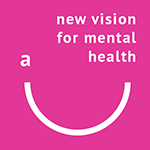“… there are basically two categories of emotions. There are core emotions, like anger, joy and sadness, which when experienced viscerally lead to a sense of relief and clarity (even if they are initially unpleasant). And there are inhibitory emotions, like shame, guilt and anxiety, which serve to block you from experiencing core emotions.”
This article by Hilary Jacobs Hendel in the New York Times concerns both the diagnosis of depression and something called Accelerated Experiential Dynamic Psychotherapy (AEDP).
The article begins:
“How can it be that a seemingly depressed person, one who shows clinical symptoms, doesn’t respond to antidepressants or psychotherapy? Perhaps because the root of his anguish is something else.
Several years ago a patient named Brian [not his real name] was referred to me. He had suffered for years from an intractable depression for which he had been hospitalized. He had been through cognitive behavioral therapy, psychoanalytic psychotherapy, supportive therapy and dialectical behavioral therapy. He had tried several medication “cocktails,” each with a litany of side effects that made them virtually intolerable. They had been ineffective anyway. The next step was electroshock therapy, which Brian did not want.
When he first came to see me, Brian was practically in a comatose state. He could barely bring himself to speak, and his voice, when I managed to get anything out of him, was meek. His body was rigid, his facial expression blank. He couldn’t look me in the eye. Yes, he seemed extremely depressed. But knowing he had been treated for depression for years without good results, I wondered about the diagnosis …”
You can read more here.




